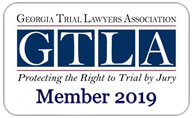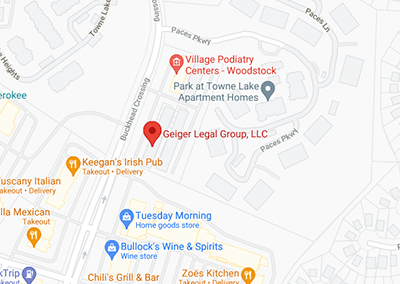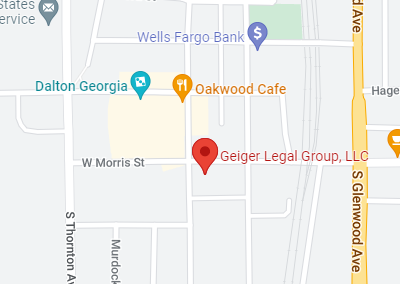A Personal Injury Lawyer's Guide to Buying Automobile Insurance

Figuring out which auto insurance is best for you is rarely simple. How do you know you’re getting the right coverage for you and your loved ones? The term “full coverage” is typically used by insurance agents, but this is usually misleading. This guide will show what, as car accident attorneys, we see are the most common insurance issues arising when someone is injured by the fault of another. This page will also cover the less clear topic of uninsured or underinsured motorist coverage (UM/UIM), as well as the optional benefit of medical payment coverage.
- What is Uninsured Motorist coverage?
- What kind of UM/UIM coverage you are currently paying for
- Whether you need to update your coverage
- What is Medical Payment coverage (Medpay) and do you need it?
If you have any additional questions after reading this, please feel free to ask us. We are happy to provide some additional insight. As a disclaimer, this guide does not constitute specific legal advice and you should seek the personal counsel of an attorney before making any legal decisions. With that being said, we hope this information is helpful to you and that you have the best coverage in place when an accident occurs.
General Auto Insurance Information
What is automobile liability insurance?
Automobile liability insurance is the main coverage you are buying for your automobile insurance policy. This is required by law in Georgia and most other states. If you are in a car accident that causes damage to someone else or their property, your liability coverage helps pay for the other party’s expenses.
There are two forms of auto liability coverage: bodily injury and property damage.
Bodily injury liability coverage (sometimes abbreviated as “BI”):
- If you are hit by an at-fault driver, the at-fault driver’s Bodily Injury(BI)coverage is the amount of money available to you to recover your Specific and General Damages. Specific Damages include your medical expenses for your treatment, lost wages, and future medical treatment related to the car crash.“General Damages,” such as mental anguish, pain and suffering, and inconvenience, make up the rest of the available recovery in Georgia.
Property damage liability coverage (sometimes abbreviated as “PD”):
- If your vehicle or personal property is damaged from an at-fault driver, the Property Damage policy pays for the cost to repair the property, or if it is a total loss, the replacement value of the property to make you whole. For example, if your car sustains $3,000.00 of damage and is worth $8,000.00 on the market, a PD will pay $3,000.00 to repair the vehicle. However, if the vehicle sustains $10,000.00 of damage and is worth $8,000.00 on the market, PD will only pay you $8,000.00 to go and replace the vehicle.
- It is important that you get a fair inspection of the type of damage your vehicle sustained so that you get the full amount of property damage payments you are entitled to under the law.
What Are The Liability Insurance Coverage Limits?
The amount your insurer will pay for a covered liability insurance claim depends on the coverage limits you choose. In Georgia, the minimal limits to operate a vehicle is $25,000.00 per person, and $50,000.00 per policy (abbreviated 25/50).
Because bodily injury(BI)coverage is the main coverage you will be able to recover from in the event you are injured in a car crash through no fault of your own, it is critical that you get add-on uninsured or underinsured motorist coverage(UM/UIM). This is the only guarantee that you will have sufficient coverage available to you should you be hurt in a car crash.
What Amount Of Liability Coverage Do I Need?
In the state of Georgia, you are only required to purchase liability bodily injury coverage at the state minimum of $25,000 per person, or $50,000 per incident. This is usually abbreviated as “25/50.” In our view, this rarely provides sufficient coverage for a party that is injured from the negligence of another. You should have coverage that not only protects your assets but can also provide a source of recovery for the person that is injured. A 25/50 car insurance policy will not provide enough money for someone seriously injured in a car crash. In our view, we would recommend the average driver carry a minimum of $100,000.00 in bodily injury liability coverage.
Should I File A Claim With My Insurance Even If The Accident Isn’t My Fault?
For some people, fear of premium increases creates a reluctance to make a claim on their own policy. We often hear clients tell us not to make a claim on their own insurance because they “don’t want my rates to go up. Luckily, GA has a statute that prohibits this action.
O.C.G.A. § 33-9-40 states simply the following:
”No insurer shall surcharge the premium or rate charged on a policy of motor vehicle insurance or cancel such policy as a result of the insured person’s involvement in a multi-vehicle accident when such person was not at fault in such accident.”
Simply put, if its not your fault, then you should always set up a claim under your own insurance. Failing to do this is like having health insurance then refusing to use it when you go to the hospital.
What do I do if I have already been in an accident?
We are sorry to hear that you are going through recovery after being in an auto accident. We probably have answers to some of your questions on our personal injury resource page, and we would recommend starting there. But do not hesitate to reach out if you have additional questions.
Uninsured / Underinsured Motorist Coverage
What is Uninsured or Underinsured Motorist Coverage (UM/UIM)?
Uninsured / Underinsured motorist coverage (“UM/UIM”) is the most important coverage you can carry. The reason? You cannot guarantee how much insurance coverage the at-fault driver will have if you are involved in an auto accident. Hopefully, the at-fault driver has $250,000.00 or more. Sadly, our office has seen too many cases where a person has been seriously injured, and the driver carries the state minimum limits or $25,000.00, or has no coverage at all. If this is the case, your only recourse is to pursue a claim against your own insurance policy for UM/UIM benefits.
How does Uninsured Motorist coverage work?
Add On UM/UIM Benefits are exactly like they sound. The underinsured motorist coverage is added on to the liability coverage carried by the at-fault driver to give you the total amount of coverage. Reduced by limits provides for additional coverage only in excess of the liability coverage. This means you may likely be paying for coverage that you cannot ever use.
For example…
If you have Add On Benefits with $50,000 in Liability Coverage and $50,000 in UM/UIM Coverage, the Total Coverage for your injury would be $100,000.
If you have Reduced by Limit Benefits with $50,000 in Liability Coverage and $50,000 in UM/UIM Coverage, the UM/UIM Coverage for your injury would be $0 (UM/UIM – Liability), so your Total Coverage would still be $50,000. Then you would need to add an additional $50,000 to your Liability Coverage to get the same total coverage in a UM/UIM incident.
What minimum coverage of UM/UIM should I have?
When purchasing UM/UIM benefits, we would advise carrying a minimum of $100,000.00 in benefits. However, be careful which type of UM/UIM benefits you are purchasing. Georgia insurance companies are able to sell two types of UM/UIM coverage: (1) Add On benefits and (2) Reduced by Limits benefits. Always, ALWAYS get Add On UIM Benefits.
Medical Payment Coverage
What is Medical Payment Coverage? And do I need it?
Medical Payment coverage is also a good coverage you should carry. Medical payments coverage provides money for immediate use on your medical bills associate with an injury when you are not at fault. For example, say you are rear ended and need to be taken to the hospital by ambulance. At the hospital, a doctor treats you and a CT scan is performed, before you are released. You are looking at the following charges from that one day of treatment:
- Ambulance Charge: $1,500.00
- Hospital Charge: $5,000.00
- ER Physician Charge: $750.00
- Radiologist Charge: $150.00
- Total Charges: $7,400.00
Because many insurance companies have high deductibles, these charges will likely go right towards your deductible and thus be your responsibility. If you have medical payment coverage, that policy will step in and issue payment to the providers, so you can focus on recovering from your injuries and not worry about paying these exorbitant bills.


















